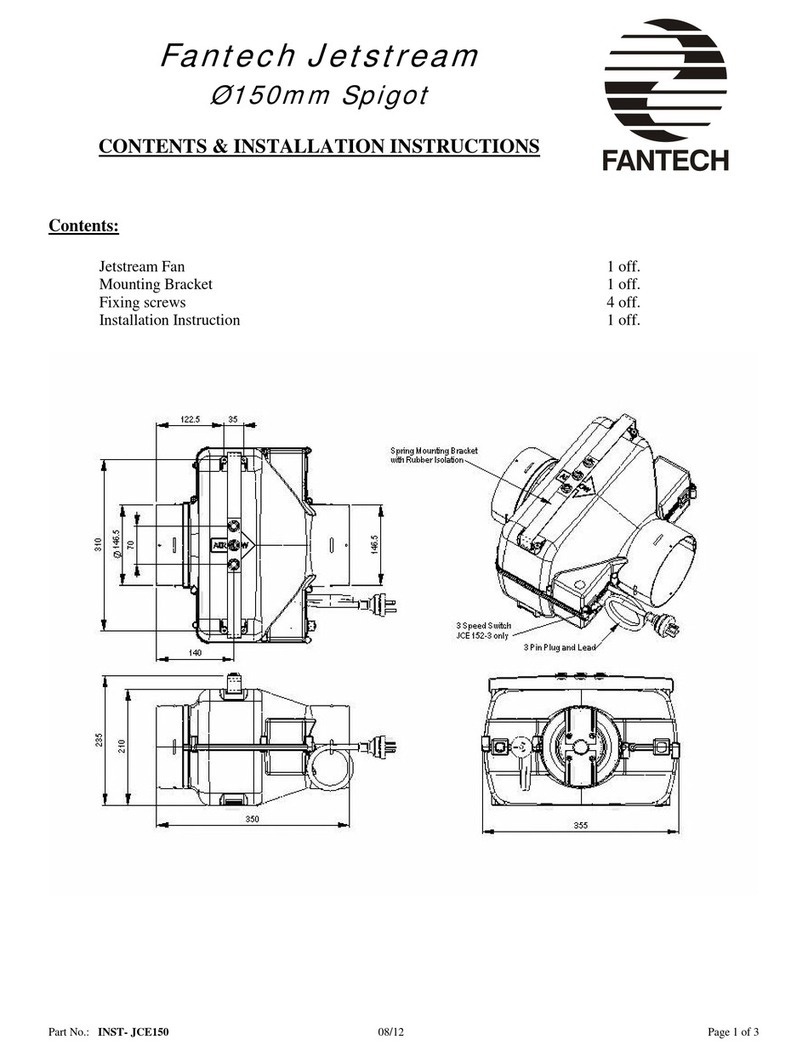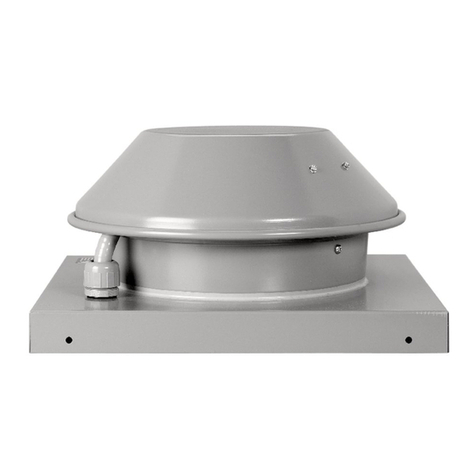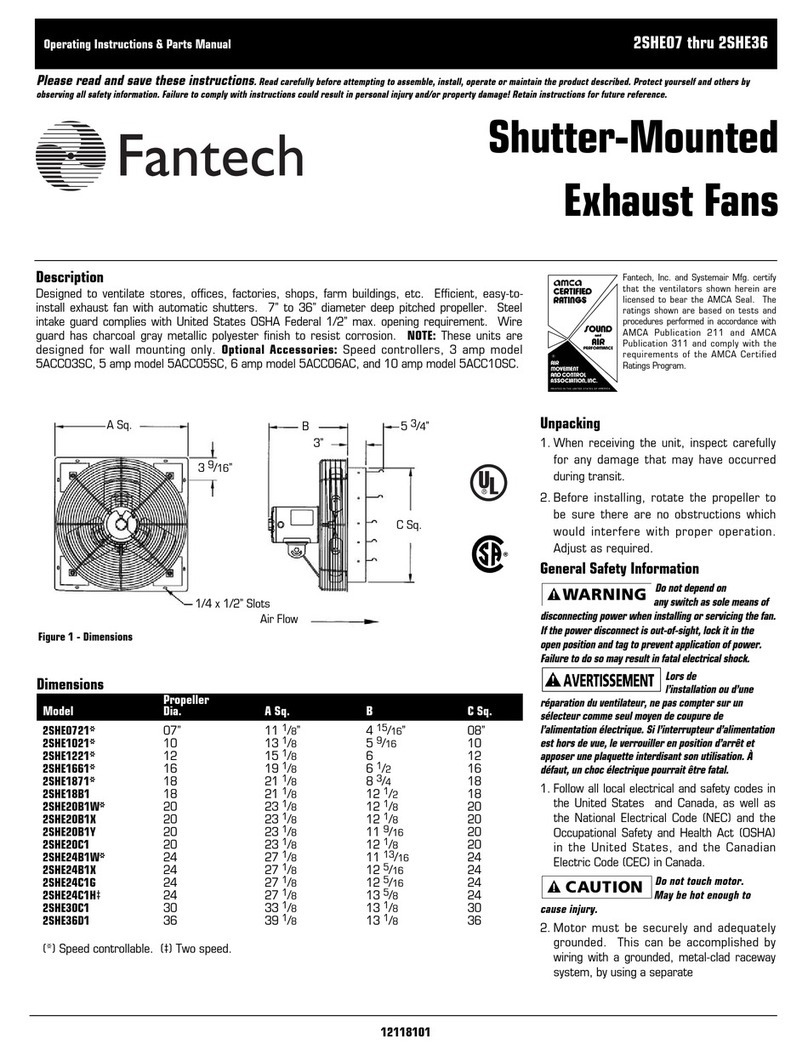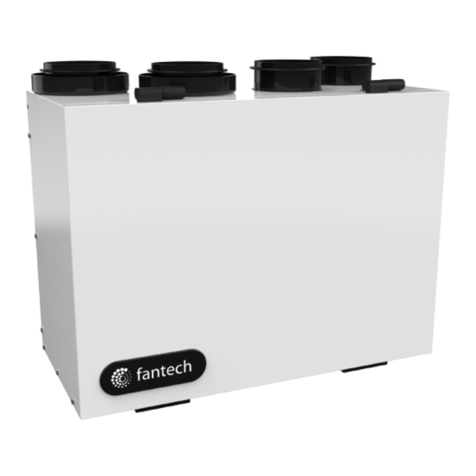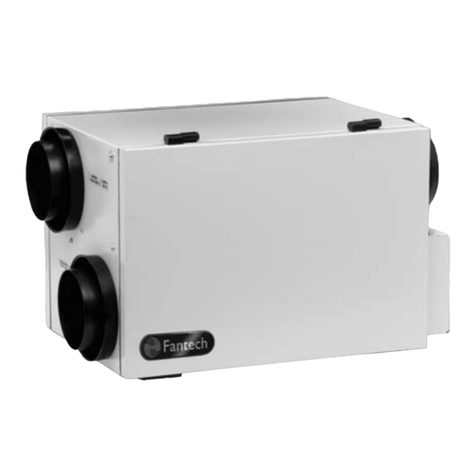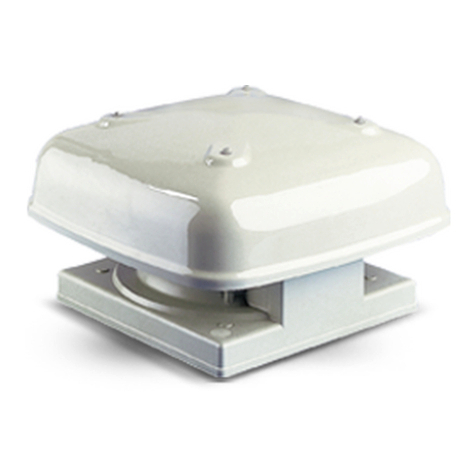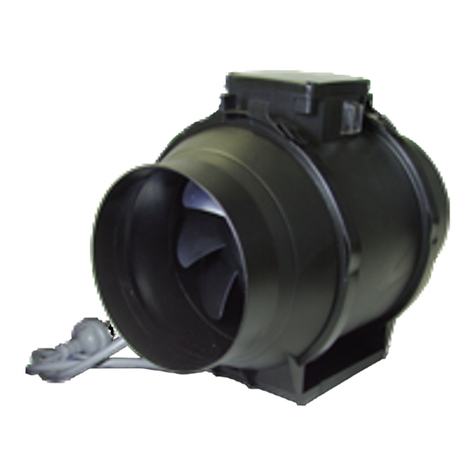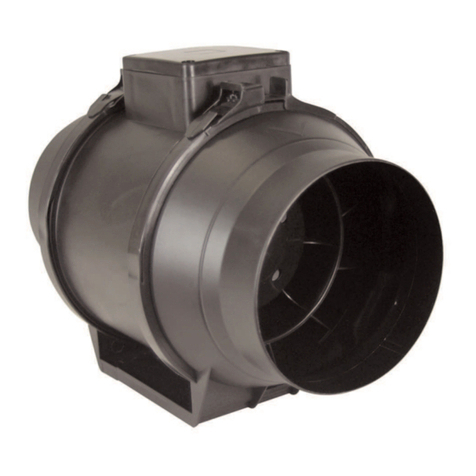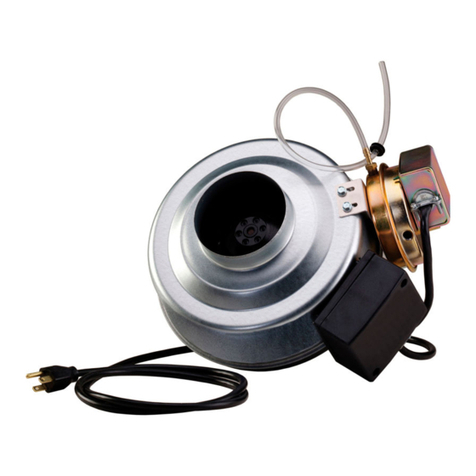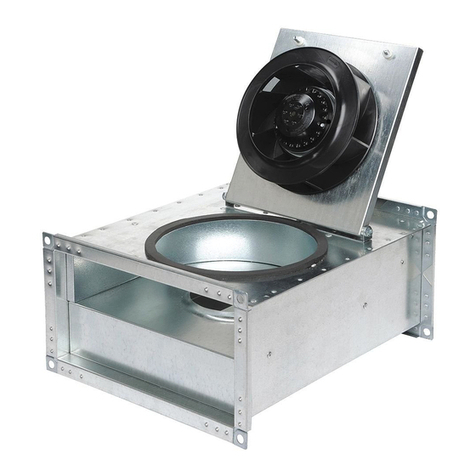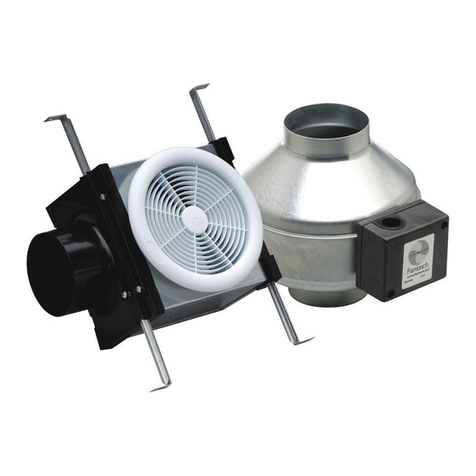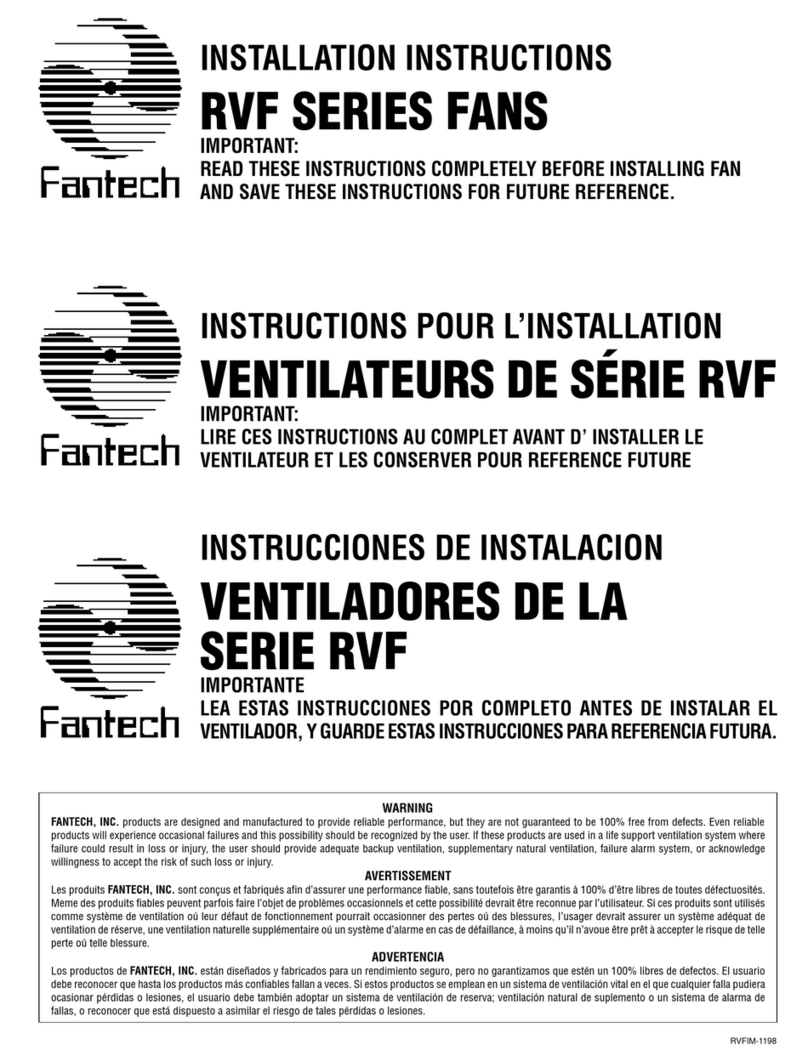
2
Installing Fan and Bracket
1. When selecting fan mounting location, the follow-
ing criteria should be considered:
a) mounting to
minimize noise generated by fan operation; b)
service accessibility
a) Mounting the fan as far as possible from
the intake point will minimize fan operating
noise from being transmitted back through
the duct work. Insulated flexible type duct
work (recommended for all bathroom
exhaust applications) will result in much qui-
eter operation. Fantech recommends mini-
mum 8' of insulated flexible duct between
any exhaust grille and fan for low noise level.
b) Fan location should allow sufficient access
for service.
2. Using the wood screws provided, attach the
mounting bracket to a support beam at the
selected location. Fan mounting can be at any
point along the duct and at any angle, however,
vertical mounting is recommended to reduce con-
densation buildup in the fan. If a horizontal instal-
lation is necessary and condensation buildup may
pose a problem, either wrap insulation around the fan or drill a ¹⁄₄" hole in the
bottom of the housing (along with an NPT insert [by others] and drain tubing)
allowing condensation to drain.
3. Attach fan to the mounting bracket with the
sheet metal screws provided. Wiring box
should be positioned for easy access. Bracket
is provided with rubber vibration isolation
grommets to prevent the transmission of
sound through the structure. Be careful not
to overtighten. Also, care should be taken not
to strip the plastic housing. Screws are self
tapping and do not require pilot holes.
However,pilot holes (no larger than ³⁄₃₂") are
recommended.
4. Connect duct work to inlet and outlet of fan
using plastic ties [by others] or duct tape.
When using insulated flexible duct, it is rec-
ommended that the inner vinyl core be
clamped or taped to the inlet and outlet and
that the vapor barrier surrounding the insula-
tion be duct taped to the fan housing.
Fantech recommends insulated flexible duct
for all bathroom exhaust applications).
NOTE: Steps 2 & 3 may be reversed.
Mount Bracket
Mount Fan
Mount Bracket
Mount Fan
Multiple Location Switching Wiring Diagram
Without Motor Speed Controller
With Motor Speed Controller
Electrical Connection
1. Remove the screws securing the terminal
box cover plate located on the side of the
fan. All fan motor connections are pre-wired
to an electrical terminal strip. A ³₈" romex
type cable restraint connector will be needed
to secure the wiring through the knockout
provided on the side of the terminal box.
2. Bring incoming electrical service through the
romex connector and the fan knockout. Be sure
to place the connector nut over the wiring com-
ing into the terminal box. There are two open
ports on the terminal strip. Using a small regu-
lar screwdriver, tighten the neutral (white) wire
of the incoming supply under the open terminal
strip port labeled "N". Tighten the line (black)
wire of the incoming supply under the open ter-
minal strip port labeled "L". Since the fan
motor is isolated within a plastic housing,
grounding is not necessary.
3. Secure the romex connector. Secure the
incoming supply with the romex connector.
Replace the fan terminal box cover. All fan
motor and capacitor connections have been
pre-wired from the factory. No additional fan
wiring is necessary.
Troubleshooting
If fan fails to operate, please check the following:
1. Consult wiring diagrams (at right) to ensure proper connection.
2. Check motor lead wiring, capacitor leads and incoming supply leads to
insure definite contact.
3. If possible, use a meter to test for continuity across the fan motor leads.
In order to do this, the capacitor must be disconnected (do not test the
capacitor - it will not meter continuity). If motor leads show continuity, con-
sult factory for a replacement capacitor.
Maintenance Instructions
Since fan bearings are sealed and provided with an internal lubricating material,
no additional lubrication is necessary.
Wiring Diagrams
All Models
Romex wiring – Top View
Liquid tight wiring Top View
(For outside applications).
Flexible Duct Installation Hints
Flexible insulated duct is strongly recommended where allowed by local code for
bathroom exhaust applications, where ducting passes through unconditioned space
or where noise is a factor. Failure to use insulation could result in excessive con-
densation buildup within the duct, and undesirable sound levels within the room.
For the quietest possible installations, Fantech recommends a minimum of 8' of
insulated flexible duct between any inlet grille and fan. When using flexible type
duct work, duct should be stretched as tight and straight as possible. Failure to do
so could result in dramatic loss of system performance. Flexible duct should be
connected to the fan with plastic zip ties or duct tape. All connections should be
as airtight as possible to maximize system performance
